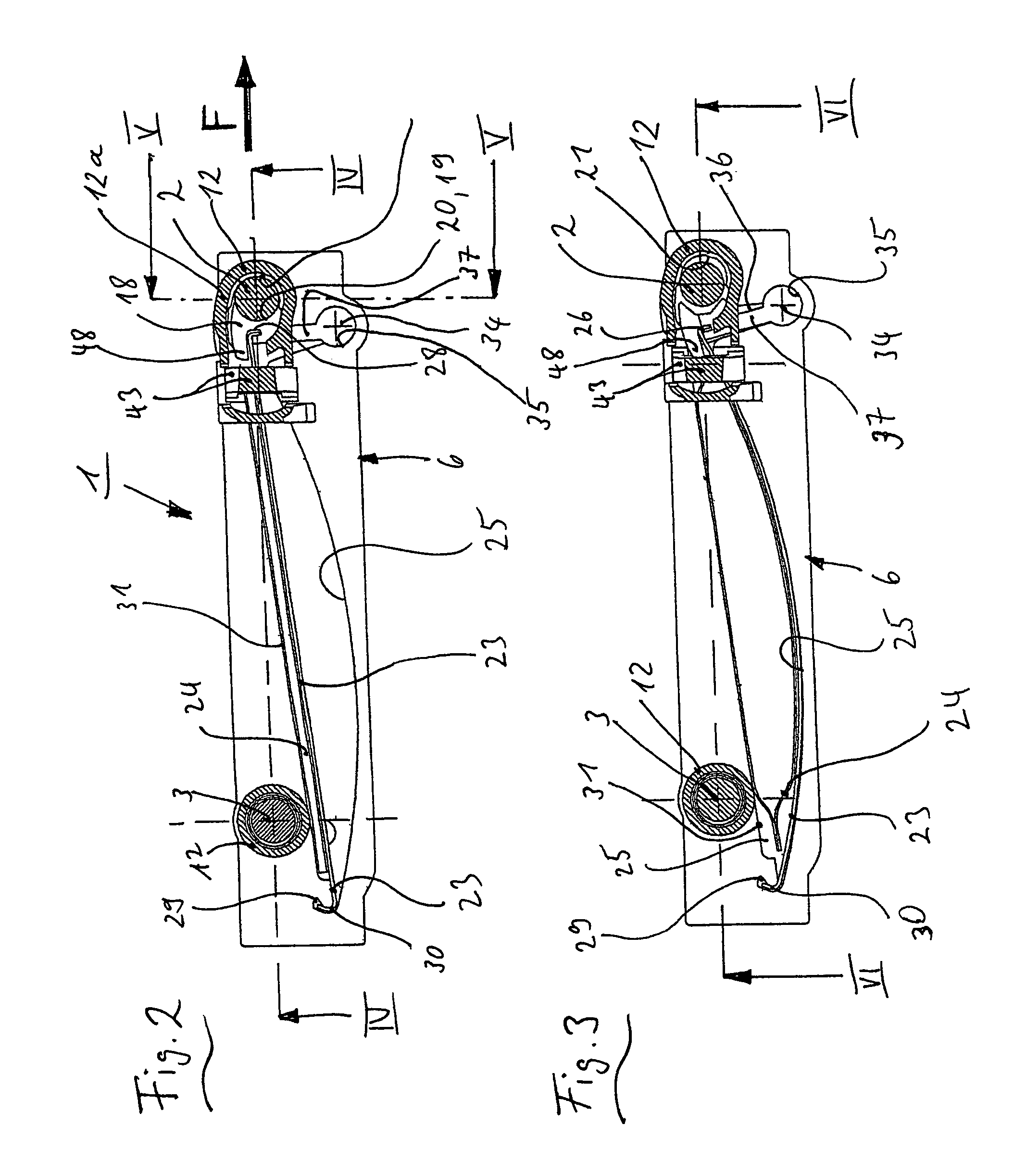Vehicle seat with a headrest and headrest adjustment assembly
a technology of headrest and adjustment assembly, which is applied in the direction of seat furniture, vehicle safety belts, applications, etc., can solve the problems of high adjusting force, headrest wobble during driving periods, and rattling noises, and the active connection between the spring or the drive must be finally dismantled
- Summary
- Abstract
- Description
- Claims
- Application Information
AI Technical Summary
Benefits of technology
Problems solved by technology
Method used
Image
Examples
Embodiment Construction
[0044]Reference will now be made in detail to embodiments of the invention, one or more examples of which are illustrated in the drawings. Each example is provided by way of explanation of the invention, and not meant as a limitation of the invention. For example, features illustrated or described as part of one embodiment may be used with another embodiment to yield a third embodiment. It is intended that the present disclosure include these and other modifications and variations. In discussing various embodiments, like or similar reference numbers are used below to refer to like or similar parts of the various embodiments.
[0045]The headrest of the embodiments shown in FIGS. 1 to 8, possess the following basics of construction, which are also to be found in the embodiments shown in FIGS. 9 to 12, as well as in FIGS. 13 to 25. Each headrest, all designated with the reference number 1, comprises a head-cushion (not shown), which extends from a first holding bar 2 to a second holding ...
PUM
 Login to View More
Login to View More Abstract
Description
Claims
Application Information
 Login to View More
Login to View More - R&D
- Intellectual Property
- Life Sciences
- Materials
- Tech Scout
- Unparalleled Data Quality
- Higher Quality Content
- 60% Fewer Hallucinations
Browse by: Latest US Patents, China's latest patents, Technical Efficacy Thesaurus, Application Domain, Technology Topic, Popular Technical Reports.
© 2025 PatSnap. All rights reserved.Legal|Privacy policy|Modern Slavery Act Transparency Statement|Sitemap|About US| Contact US: help@patsnap.com



